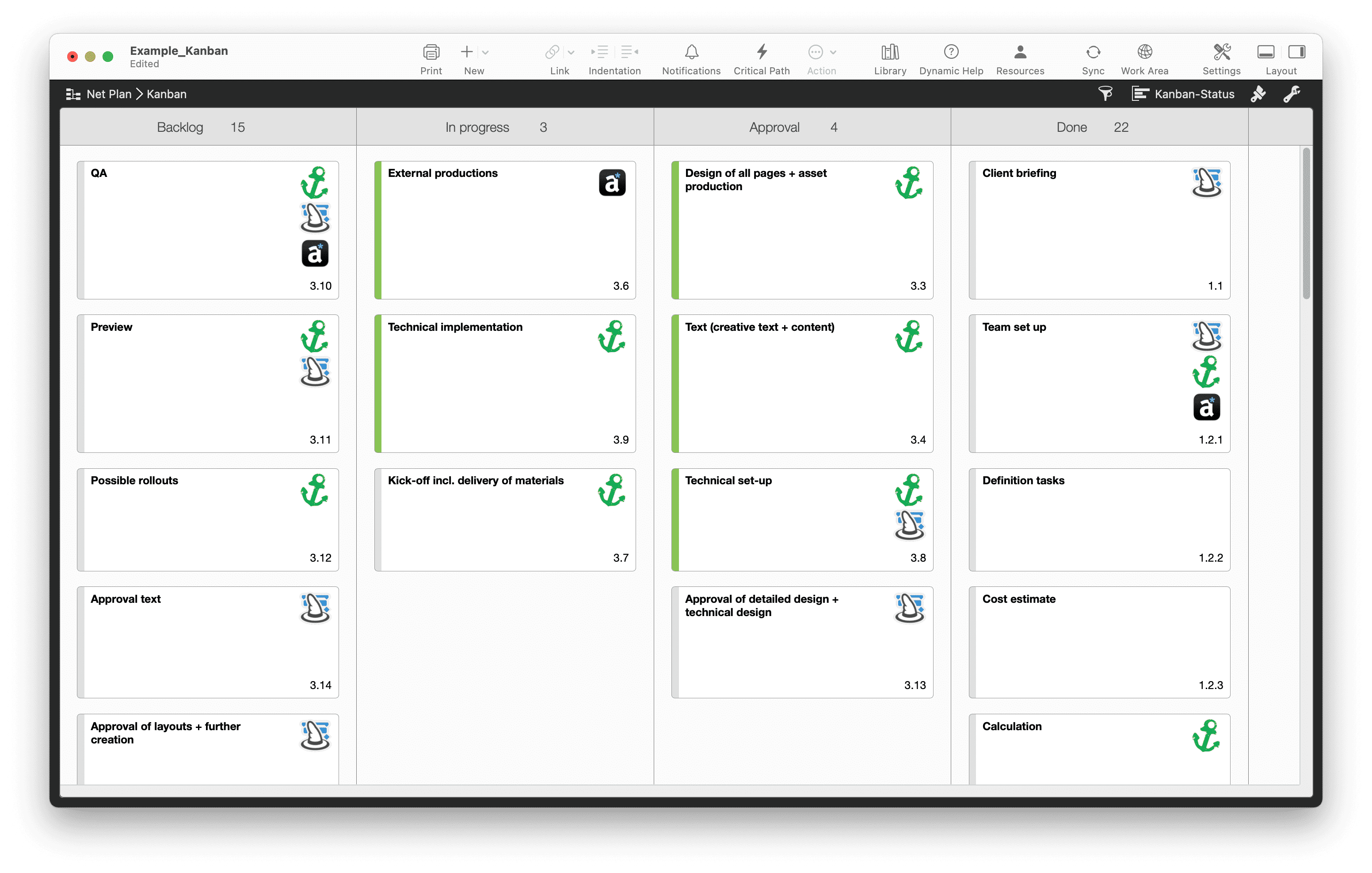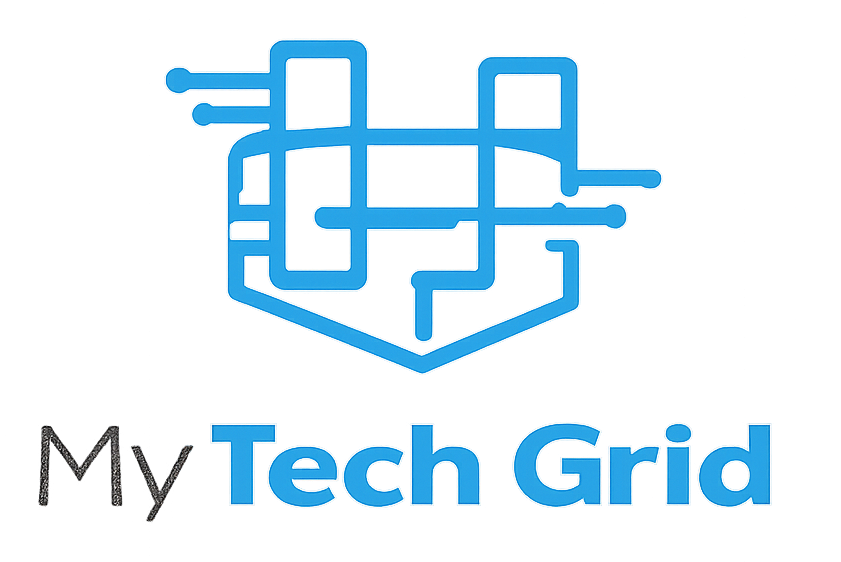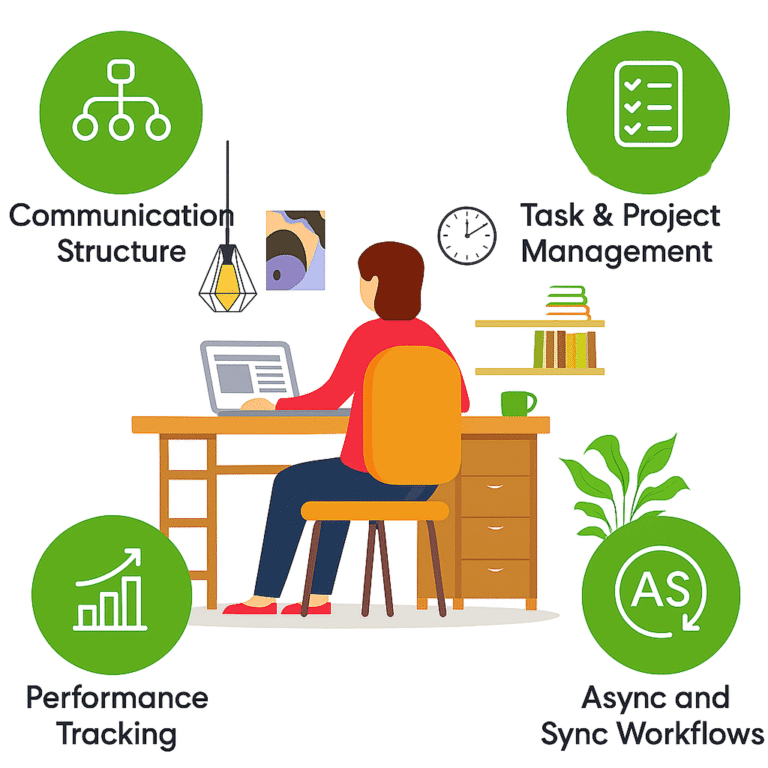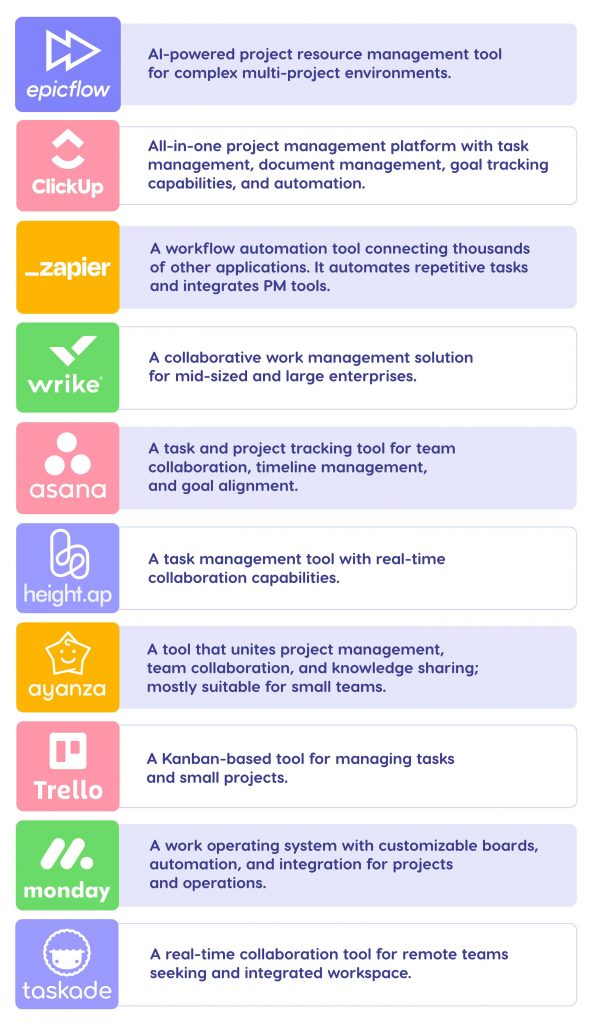How to Use Kanban Boards for Remote Project Tracking: Boost Efficiency
Are you struggling to keep your remote projects on track and your team aligned? Using Kanban boards might be the simple solution you need.
Imagine having a clear, visual way to see every task’s progress, who’s responsible, and what’s coming next—all in one place. Kanban boards help you do just that by breaking down complex projects into manageable steps you can easily monitor and adjust.
You’ll discover how to use Kanban boards effectively for remote project tracking, so you can boost productivity, reduce confusion, and keep your team connected no matter where they are. Ready to transform the way you manage projects? Let’s dive in!

Credit: teamhood.com
Kanban Basics
Kanban is a simple yet powerful tool for managing remote projects. It helps teams see work clearly and track progress easily. Understanding the basics of Kanban makes it easier to use for any project.
This section covers the core ideas behind Kanban. You will learn how to visualize your workflow, control work-in-progress, and understand the key elements of a Kanban board.
Visualizing Workflow
Visualizing workflow means showing all tasks in one place. Each task moves through stages like “To Do,” “In Progress,” and “Done.”
This visual setup helps remote teams understand project status at a glance. It reduces confusion and keeps everyone aligned.
Using columns or lanes on a Kanban board makes this possible. Team members can see what work needs attention next.
Work-in-progress Limits
Work-in-progress (WIP) limits set a maximum number of tasks in any stage. This prevents overloading team members with too many tasks at once.
Limiting WIP helps maintain focus and improves task completion speed. It encourages finishing tasks before starting new ones.
Teams can adjust WIP limits based on capacity and project needs. This keeps work balanced and manageable.
Core Kanban Elements
Kanban boards have three main parts: cards, columns, and swimlanes. Cards represent tasks or work items.
Columns show different stages of the workflow. Swimlanes divide tasks by team, priority, or type.
These elements organize work clearly and make tracking easier. They support better communication in remote teams.

Credit: www.projectwizards.net
Setting Up Digital Boards
Setting up digital Kanban boards is essential for effective remote project tracking. Digital boards help teams stay organized, see progress, and manage tasks without physical limits. They allow every team member to access the project status anytime, anywhere. Setting them up correctly boosts communication and streamlines workflows.
Choosing Tools For Remote Teams
Select tools that fit your team’s size and work style. The tool should be simple to use and accessible on multiple devices. Look for options that offer real-time updates and easy collaboration. Integration with other apps your team uses can improve efficiency. A good tool reduces confusion and keeps tasks visible for everyone.
Microsoft Planner Features
Microsoft Planner uses cards to represent tasks. Cards move through stages called buckets, showing task progress. Each card can include due dates, assigned members, checklists, and attachments. Planner integrates well with Microsoft Teams, allowing teams to work together in one place. The visual layout makes it easy to understand project status at a glance.
Microsoft Loop Advantages
Microsoft Loop offers flexible Kanban boards within a collaborative workspace. Users can customize which fields appear on task cards, adapting boards to project needs. Loop supports real-time collaboration, making updates visible instantly. It connects well with other Microsoft 365 apps, helping teams work smoothly across tools. Loop’s adaptability suits projects with changing requirements.
Creating Your Kanban Board
Creating your Kanban board is the first step to track projects remotely. A well-organized board helps everyone see task progress clearly. It makes managing work simple and visual. Start by setting up the board structure and adding task details.
Defining Columns And Stages
Divide your board into columns that show each project stage. Common columns are To Do, In Progress, and Done. These stages represent task flow from start to finish. Adjust columns based on your team’s workflow. Clear stages help track work easily and spot bottlenecks fast.
Adding And Managing Cards
Create cards for each task or work item on your board. Cards hold key task information like titles and descriptions. Move cards across columns as work progresses. Assign cards to team members to clarify responsibility. Keep cards updated to reflect real-time status changes.
Customizing Card Fields
Customize card fields to fit your project needs. Add due dates, priority levels, or checklists for better detail. Use tags or labels to group similar tasks or mark status. Custom fields give more context and improve team communication. Simple, relevant details keep the board useful and clear.

Credit: cpoclub.com
Collaborating Remotely
Collaborating remotely with a Kanban board helps teams stay organized and connected. It allows everyone to see tasks clearly and work together smoothly. Remote teams benefit from visual tools that show task status and progress.
Kanban boards improve communication and reduce confusion. Teams can share updates instantly and keep track of deadlines. This makes remote project tracking easier and more transparent.
Integrating With Communication Platforms
Connect your Kanban board to popular communication apps. Tools like Slack or Microsoft Teams work well with Kanban boards. This connection sends task updates directly to chat channels.
Team members get real-time notifications about task changes. This keeps everyone informed without leaving the chat app. Integration reduces the need to switch between tools constantly.
Assigning Tasks And Deadlines
Assign tasks to team members clearly on the Kanban board. Add deadlines to each task for better time management. This helps remote workers know their responsibilities and due dates.
Use simple labels or tags to highlight priorities. Clear task assignment prevents confusion and missed deadlines. Everyone understands what they need to do next.
Tracking Progress As A Team
Use the Kanban board to monitor project progress together. Move task cards through columns like “To Do,” “In Progress,” and “Done.” This visual flow shows how work advances.
Team members can update tasks instantly from anywhere. This keeps the board current and helps spot bottlenecks early. Tracking progress as a team supports better collaboration and timely project completion.
Optimizing Workflow
Optimizing workflow is key to managing remote projects with Kanban boards. It helps teams stay focused and complete tasks faster. A smooth workflow reduces delays and confusion. Clear processes make collaboration easier across different locations. Using Kanban boards effectively guides your team through each step of the project.
Setting Wip Limits For Efficiency
Work In Progress (WIP) limits control how many tasks are active at once. They prevent team members from taking on too much work. This avoids bottlenecks and task overload. Setting WIP limits helps balance workload evenly. It keeps the team focused on finishing tasks before starting new ones. Teams can adjust these limits based on their capacity and deadlines.
Using Visual Signals For Prioritization
Visual signals on Kanban boards show task priorities clearly. Color-coded labels or tags highlight urgent work. Icons or flags mark important deadlines and blockers. These signals guide team members on what to do next. Visual cues reduce the need for constant check-ins. Everyone sees the project’s priority at a glance.
Monitoring And Adjusting Workflow
Regularly review the Kanban board to track progress. Look for stalled tasks or overloaded columns. Team members can discuss issues during daily stand-ups or meetings. Adjust workflows by moving tasks or changing priorities. Continuous monitoring helps catch problems early. This keeps the project on track and improves team performance.
Advanced Kanban Techniques
Advanced Kanban techniques help remote teams improve project tracking. These methods focus on refining workflow, increasing predictability, and managing complexity. Applying these tactics can enhance team collaboration and project delivery. They provide deeper insights into progress and bottlenecks.
Establishing Commitment And Delivery Points
Commitment points mark when a task enters the team’s responsibility. Delivery points indicate task completion and readiness for release. Defining these helps clarify expectations and improves workflow control. Teams can better plan and manage work stages. This reduces confusion about task ownership and deadlines.
Analyzing Kanban Metrics
Kanban metrics reveal how work flows through the board. Lead time measures how long tasks take from start to finish. Cycle time tracks the duration of active work on a task. Monitoring these metrics identifies bottlenecks and delays. Teams can adjust processes to enhance efficiency and predictability.
Scaling Boards For Larger Projects
Large projects need multiple boards or layered Kanban systems. Divide work by teams, features, or phases for clarity. Use portfolio boards to track progress across many teams. Consistent rules and workflows keep all boards aligned. This approach supports coordination and visibility in complex projects.
Common Challenges And Fixes
Using Kanban boards for remote project tracking brings many benefits. Yet, teams face common challenges. These issues can slow progress and cause confusion. Knowing how to fix them keeps projects on track and teams productive.
Overcoming Remote Coordination Issues
Remote teams often struggle with clear communication. Team members work in different time zones and schedules. This creates delays in updates and feedback.
Set regular check-ins to keep everyone aligned. Use chat or video calls to discuss board updates. Encourage team members to comment on tasks directly.
Make sure the Kanban board is always up to date. Assign one person to review and update the board daily. This helps avoid misunderstandings and missed deadlines.
Maintaining Board Discipline
Without discipline, Kanban boards can become messy and confusing. Tasks may stay in one column too long or be forgotten.
Set clear rules for moving tasks through the board. Limit how many tasks can be in progress at once. This helps the team focus and finish work faster.
Encourage everyone to update their tasks right after completing a step. Regularly review the board together to keep it clean and organized. This keeps the workflow smooth and visible.
Avoiding Bottlenecks
Bottlenecks slow down the entire project. They happen when too many tasks pile up in one stage.
Use the Kanban board to spot these blocks early. Track the time each task spends in every column. If tasks pile up, discuss why and find solutions.
Adjust task limits or redistribute work to balance the load. Clear bottlenecks quickly to keep progress steady and steady flow.
Case Studies And Examples
Case studies and examples provide clear proof of how Kanban boards improve remote project tracking. Real stories help understand practical benefits and challenges. They show how different teams use Kanban to stay organized and meet goals from various locations.
These examples highlight key tactics and results. They guide teams on applying Kanban effectively in their own remote work setups. Below are three focused areas drawn from real experiences.
Successful Remote Project Tracking
A software company with staff across three countries used Kanban boards to track tasks daily. Each team member updated their cards in real time. This practice kept everyone aware of project progress and bottlenecks.
Managers saw clear visual workflows and adjusted priorities fast. Deadlines improved by 20% because the team avoided task overlaps and delays. Communication became simpler since all updates were visible on one platform.
Boosting Efficiency With Kanban
An online marketing team switched to Kanban boards to manage campaigns remotely. They limited work in progress to two tasks per person, reducing overload. This focus helped finish tasks faster and with better quality.
Kanban cards included checklists and deadlines, making task details clear. Team members collaborated by commenting on cards, solving issues quickly. Overall efficiency rose by 30%, and client satisfaction improved.
Lessons From Real Teams
One remote design team learned to keep Kanban boards simple. Too many columns and cards caused confusion. They reduced columns to three main stages: To Do, In Progress, Done.
Regular reviews of the board helped spot delays early. Team members shared feedback on task status every week. This habit built trust and kept work transparent. They found that consistent updates and clear priorities are crucial for success.
Frequently Asked Questions
What Are The Six-six Rules Of Kanban?
The six-six rules of Kanban are: visualize workflow, limit work in progress, manage flow, make policies explicit, implement feedback loops, and improve collaboratively. These rules enhance efficiency and clarity in task management.
Does Microsoft Have A Kanban Board Tool?
Yes, Microsoft provides Kanban board tools through Microsoft Planner and Microsoft Loop. Both offer customizable, visual task management. Microsoft Planner integrates with Teams for collaboration. Microsoft Loop allows flexible Kanban views within workspaces, enhancing project tracking and team coordination effectively.
How To Use Kanban Boards For Project Management?
Use Kanban boards by creating columns for task stages, adding task cards, and moving cards as work progresses. Limit work in progress to boost focus and track project status visually. Update boards regularly to improve team collaboration and project flow.
What Are The 5 Key Elements Of A Kanban Board?
The 5 key elements of a Kanban board are visual signals, columns, work-in-progress (WIP) limits, commitment point, and delivery point. These help track tasks, manage workflow, and improve project efficiency.
Conclusion
Using Kanban boards helps remote teams track projects clearly and easily. Visualizing tasks improves focus and teamwork every day. Limiting work in progress keeps the team productive and avoids overload. Regular updates on the board ensure everyone knows the project status.
Simple steps make remote project tracking less stressful and more organized. Try using Kanban boards to keep your projects on track. Clear visuals and easy task movement boost remote work success.





